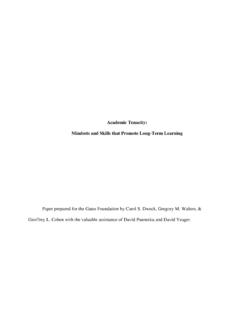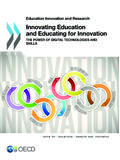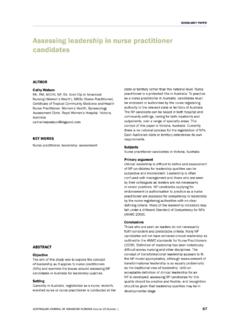Transcription of Mattering in a dementia care home The Butterfly Approach ...
1 dementia care Matters 2013 Mattering in a dementia care home The Butterfly Approach Author : Dr David Sheard Chief Executive / Founder, dementia care Matters Focusing on the development of attached leadership, nurse modelling and emotional intelligence as the primary competencies in a dementia care team Introduction Creating a family like atmosphere and sharing closeness matters in dementia care . With this simple concept, in 1995, the early foundations were laid down of the Feelings Matter Most model of dementia care . Following its initial introduction at Merevale House in Atherstone a care home for 36 people living with a dementia the Approach has spread across the UK and Ireland. Known as Butterfly Service homes, there are currently 56 project homes adopting this model.
2 With 45 care homes in England, 6 care homes in Wales and 5 care homes in Ireland the model is being implemented in large corporate care homes, independent sector nursing homes and Local Authority care homes. Feelings Matter Most the model Beginning with Kitwoods original theory of person centredness, the model also draws on ideas from neuro linguistic programming about personal congruence in leadership and emphasizes the need to embed dementia care training in the development of staffs emotional connection and emotional intelligence. The Feelings Matter Most model centres on eight key components: BEING person centred involves helping staff to shift their focus from only doing tasks to being able to reach people on the inside. ENABLING quality of life starts with really seeing, hearing, feeling the lived experience of people. This also involves measuring the minute by minute experiences of people and being determined to improve the moment.
3 INSPIRING leadership means guiding people away from detached management to a new professionalism of attached leadership. Attached leadership is where people lead from the heart and not just by the hand. NURTURING staffs emotions in dementia care , recognises the need to support peoples emotional labour. This centres on fostering positive team relationships whilst requiring the development of an emotion led organisational strategy. dementia care Matters 2013 GROWING training that works signals a move away from tick-box courses and awareness level competency training. The new focus is on the development of peoples emotional intelligence through reflection, modelling and coaching. ACHIEVING real outcomes is all about focusing on policies, procedures and systems as the secondary focus.
4 Balancing and measuring quality of service and quality of life as the primary goal becomes the new focus. SUPPORTING nurses in dementia care to modernise and to restore compassionate cultures of care is critical. This involves nurses being developed to merge clinical best practice with the new focus of nurses knowing how to lead and personally model person centred care and relationship focused support. Mattering in a dementia care home involves centring on the core skills in staff of Feel, Look, Connect and Occupy whilst creating culture change through developing a community based on Share, Reach, Relax and Matter. Shifting from a model to Mattering Feeling you matter is at the core of being person. Knowing you matter is at the heart of being alive. Seeing you matter is at the centre of carrying on in life . Every registered manager in a Butterfly care home needs to begin a culture change programme with these key fundamental beliefs.
5 However turning these beliefs about people generally Mattering into evidence that people matter in care homes is far from easy. It involves committing to a series of shifts: Shifting from : doing detached management to being an attached leader over emphasising physical care to prioritising emotional care providing sterile, clinical, hotel environments called units to creating busy, filled up, engaging places that feel like home focusing on task orientation to being comfortable with a relaxed, freed up atmosphere purchasing training on dementia care awareness about others to developing learning about being person centred in ourselves running a home for people to involving people in the running of their own home emphasising separateness in how a building and we look, to appearing more informal, best friends and family like These shifts are significant and whilst the concepts of family, closeness and Mattering may be simple.
6 The achievement of these shifts in a care home culture and environment are complex. dementia care Matters 2013 Achieving 12 clear outcomes In Butterfly care Homes a wide range of quality of life and quality of service outcomes are focused upon: A house model breaking the care home up into domestic scale, recognisable houses in imaginative low cost ways Creating housekeepers transforming outdated ways of working as domestic and catering staff into housekeepers being the heart of the home in each house Removing us and them clearing away the boundaries and barriers that separate us from feeling peoples lived experience and providing an environment, a look that emphasises the quality and value of close relationships Removing controlling care enabling staff to understand how each moment in the day is an opportunity and choice to turn a potentially controlling or neutral task orientated response, into one that is a real, positive, social.
7 Shared connection Removing central dining rooms preventing the herding of people from one room to another and creating in lounge/diners a positive, engaging, social occasion where food preparation, visual choices, sensory stimulation and social connections turn the mealtime experience into a key part of social interaction in the day Matching preventing people experiencing unnecessary stress by being all muddled together at different points of a dementia , by grouping people together in houses at a similar point of experience. This gives both people living there the best chance to thrive and have a sense of well being, whilst enabling staff also to really provide specialist skills to people in focused groups Relaxing the routines freeing up the staff team, by giving them permission to be with people, whilst fostering team work to still flexibly also achieve the discreet running of the home Filling the place up turning the home into an engaging place with loads of opportunities to reminisce, touch, feel, carry objects and be engaged in domestic living.
8 This requires an over exaggerated staging bringing items of stuff closer to people Enjoying mealtime experiences training staff how to sit and be with people sharing a meal, whilst keeping the conversation going by rehearsing conversation topics and introducing memories and placing engaging items on the table, in pockets etc to talk about Turning staff into butterflies helping staff to draw on a wide variety of ways to engage and occupy people in the moment, from staff wearing activity belts and connecting with people, to lifting the atmosphere with short minute by minute activities Feelings before behaviours providing a set of recipes for staff on the meanings behind behaviours. Training staff on approaches which acknowledge that people living dementia care Matters 2013 with a dementia rely less on facts, logic and reason and therefore people living with a dementia trust more feelings Measuring well being giving staff practical tools to increase peoples well being and decrease ill being.
9 Helping staff to see that quality of well being is the primary indicator of good quality dementia care Inspiring leadership, modernising nursing and valuing emotional labour It must be emphasised that the model, the shifts it requires and its twelve components are not just tasks and projects to be bolted on to a current care home culture. A much more fundamental aspect of a Butterfly Project is the need to change first the culture of leadership in the home , then the style of dementia care nursing and finally to recognise the impact that providing emotional care has on people working in a care home . To achieve this a significant amount of time is spent guiding, coaching and modelling new ways of being a leader, a nurse and a care worker. As one manager commented: The culture we are creating does not need managing, it needs inspirational leadership.
10 The leadership style needs to be heartfelt, it has to come from within you people have to feel it s who you are. This cannot be achieved from sitting in an office, you need to model this Approach in the houses . Nurses reduced into thinking that dementia care nursing involves care planning in an office, liaising with community professionals and administering medication stood at a drug trolley need re-empowering to see that the future of dementia care nursing is different and far more exciting. Person centred dementia care nursing is all about inspiring the team and leading positive social interactions, whilst providing people with the very best lived experience and then knowing how to combine this with excellent nursing and personal care . This is a new agenda for nurses in dementia care homes who need guidance on how to model best practice in dementia care to other staff.










